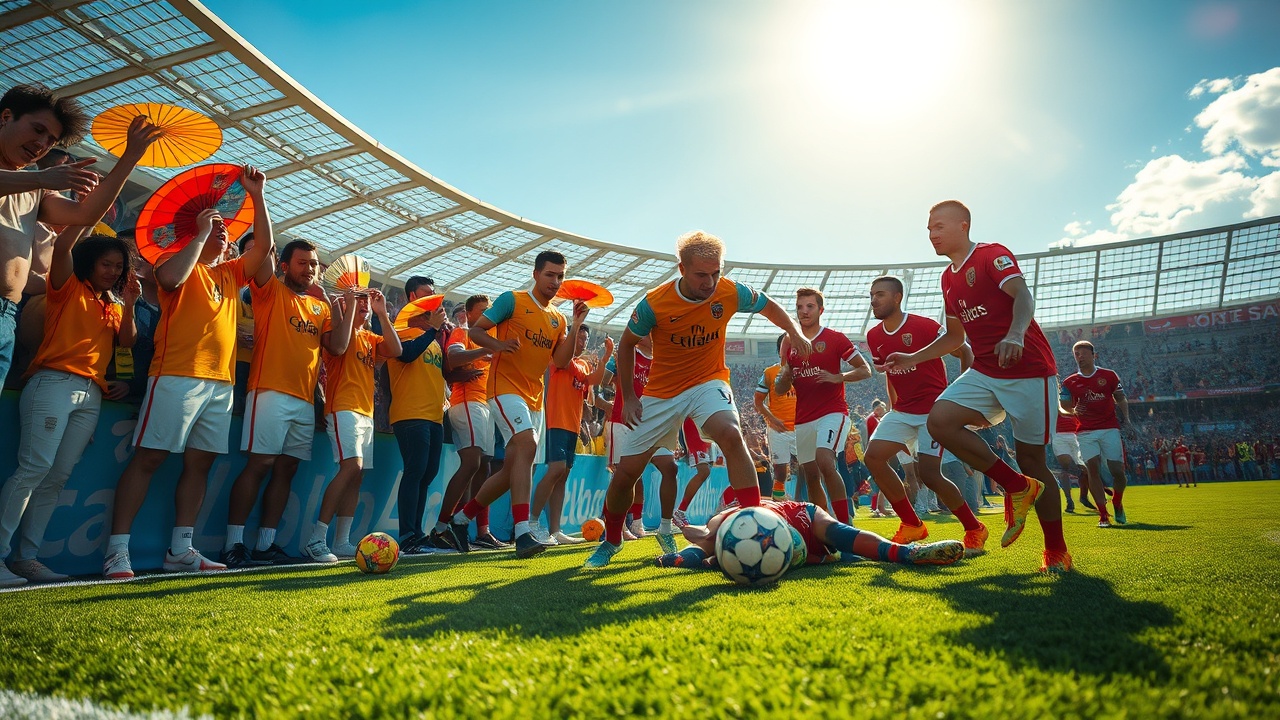The Challenges of the Club World Cup in Extreme Heat
The Club World Cup in the United States is facing significant challenges due to soaring temperatures, with conditions becoming a hot topic among players, coaches, and spectators. Over the weekend at Cincinnati’s TQL Stadium, as temperatures rose toward 90°F during Borussia Dortmund’s encounter with South Africa’s Mamelodi Sundowns, the German team shared a notable social media post indicating that their substitutes opted to watch the first half from the locker room to escape the blistering sun.
“I’ve never seen that before, but with this heat, it makes perfect sense,”
the team remarked, sharing a visual of players casually resting in shorts and T-shirts around a table filled with refreshments.
Concerns About Player Safety and Performance
Throughout the opening week of the tournament, there was a palpable concern about the sweltering conditions, especially as a major heatwave is predicted to sweep across the country in the upcoming days. This has prompted a call for FIFA to reevaluate its scheduling and heat management protocols. Paris Saint-Germain’s coach, Luis Enrique, underscored the match’s heat-related impact following their game against Atletico Madrid, acknowledging that while the timing might benefit European fans, it posed significant challenges for the players competing under intense midday sun.
Temperature Forecasts and Match Scheduling
The forecast for the week predicts temperatures, particularly in the northeastern United States, to exceed 100°F in cities like New York and Philadelphia, which already has an extreme heat warning issued. For instance, Nashville, where Auckland City faces Boca Juniors, anticipates a high of around 98°F, while Charlotte is set to experience similarly oppressive conditions during Benfica’s match against Bayern Munich. Cincinnati and Washington, D.C. are also expected to see game-day temperatures in the mid-90s.
Concerns about player safety and performance under such extreme conditions are echoed across the tournament. Of the 63 matches scheduled, a staggering 35 will kick off prior to 5 p.m., with 15 starting at midday—determined more by television schedules than player welfare. Only Atlanta’s Mercedes-Benz Stadium features a retractable roof, providing some relief from the heat when necessary.
FIFA’s Response and Expert Insights
In response to the intense conditions, FIFA has put certain protocols in place, including cooling breaks when the pitch temperature exceeds a specific threshold. However, experts are questioning whether these measures are adequate, pointing out that the current threshold of 89.6°F for breaks might be too high given the demands placed on players.
“Maintaining optimal performance levels during extreme heat should be prioritized to ensure the well-being of athletes at such prestigious events,”
emphasized Christopher Tyler, an expert in Environmental Physiology, suggesting organizational changes to regulate player safety from heat exposure.
Adapting Strategies from Clubs
Despite these concerns, some clubs are trying to adapt. Real Madrid, for instance, has implemented heat acclimatization strategies, training their players under similar high-temperature conditions to prepare them for the matches. PSG’s Vitinha mentioned the difficulties players face under such conditions, highlighting the need for recovery methods like cold treatments to combat the heat.
Impact on Fans
Amidst all this, not only are the players affected. Fans attending matches also contend with the scorching weather, with reports of individuals requiring medical attention and difficulty securing cold refreshments. Many spectators have been seen moving seats in search of shade, with long lines for water reported during matches.
Looking Ahead: 2026 World Cup Preparations
With the 2026 World Cup around the corner set to take place in the US, Canada, and Mexico during a similar time frame, the scrutiny on FIFA’s arrangements regarding heat management is only anticipated to increase. The organization must balance showcasing the sport while ensuring player and fan safety amid rising global temperatures. The ongoing discussions and strategies being implemented now will set a precedent for how the sporting world tackles issues of climate and heat intolerance on the grandest of stages.




